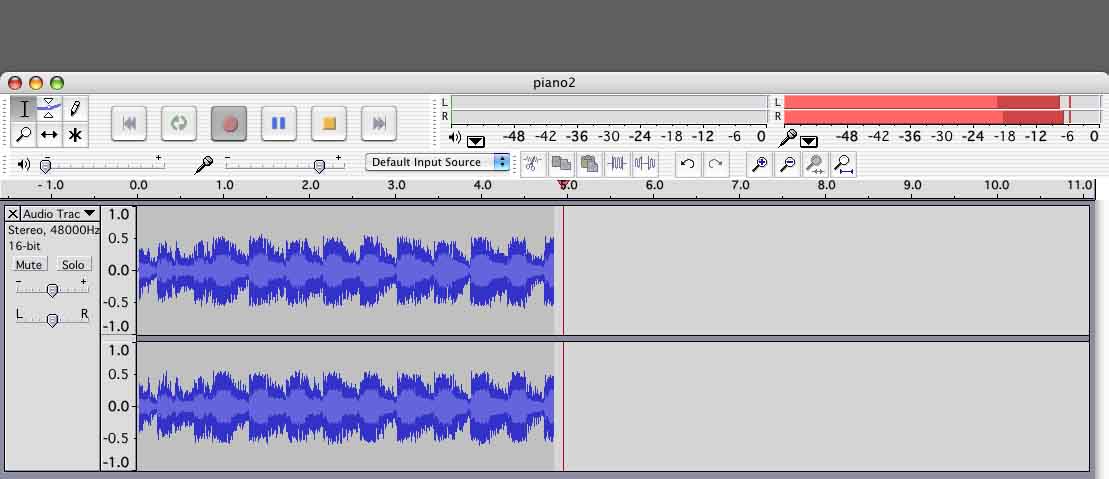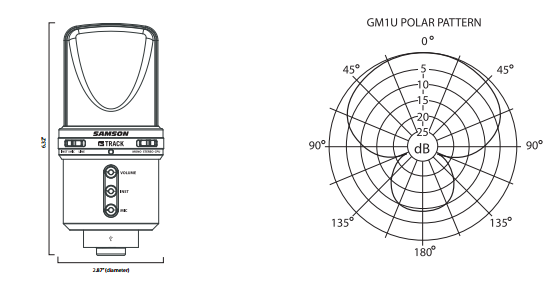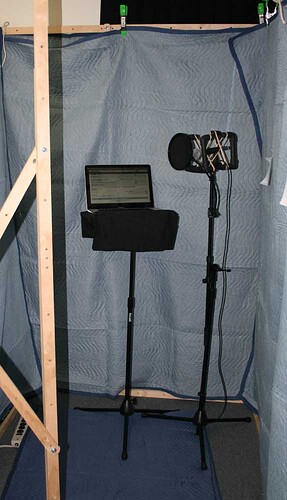Currently can’t decide between these four mics, for commentary and VOIP uses. In no particular order:
Shure PG42-USB (shure.com/americas/products/microphones/pg/pg42-usb-vocal-microphone)
Blue Spark Digital (bluemic.com/spark_digital)
MXL USB.009 (mxlmics.com/microphones/usb/009)
Audio-Technica AT2020 USB+ (audio-technica.com/cms/wired_mics/5879a6ca22e5aa7e/index.html)
As I said, only for commentary and voice communication, no vocals or instruments. In rough order of what I care about, from greatest to least: sound quality, features, build quality, price, looks. I of course narrowed it down to these mics for various reasons. I found the Shure because of a recommended review that praised it for its audio quality. I found the Spark Digital because I have bought from Blue before, and I know they are great. Finally, I found the MXL and AT2020 because of YouTubers I watch, and I know the sound quality is good. Unfortunately, I can’t afford to buy them all, try them, and sell the ones I didn’t prefer, so I came here.
Unfortunately, you never get somebody trying out two microphones and liking one of them.
Audio quality has almost nothing to do with the microphone. What kind of room do you have and where is it? We had a recent posting from someone wanting us to fix other people talking next door to his performance. You can rarely fix that with either microphone or Audacity filters.
This performance clip will always sound like she was recording in her mum’s kitchen.
http://kozco.com/tech/audacity/clips/EchoSample.mp3
In these cases, you can go a long way to solving problems with News Gathering Techniques which tend to involve an expensive microphone and low quality.
http://kozco.com/tech/audacity/pix/ShotGunInterview.jpg
The longest posting on the forum is someone in an apartment in Hollywood wanting to record his voice for Audiobooks. He ended up making a studio in his broom closet.
He was using a Snowball.
More later.
Koz
So far the MXL unit seems to come out on top. It has on-board zero latency monitoring and volume/balance controls similar to the G-Track that I have used and like.
http://www.kozco.com/tech/audacity/pix/samsonGTrackConnections.jpg
Get the full spider mount, pop and blast filter and a stand.
Note the mic on the left. Shock mount, blast filter and stand.
http://www.kozco.com/tech/audacity/pix/JMASoundShoot.jpg
You have to look hard. I didn’t have a lot of time to shoot that pix.
Note that if there’s any chance anywhere, ever that you’re going to want two or more microphones, you’re going to start over. USB microphone are aggressively one-bangers. There are ways to force two USB microphones, but you lose production tools and adjustments and on some microphones, you could have sync issues. “Why is there an echo a half-hour into my show?”
There are other ways to force that to work. Each microphone gets a computer. You can still have sync issues, but you have full control of the session.
For that amount of money, you can have a very nice, expandable analog setup.
One last note. Don’t buy something by looking at the reviews. Buy it by the complaints, and pay attention. One person who had troubles is notable, but if multiple people have the same troubles… “The microphone was noisy and never got loud enough. The support phone line was no help at all.”
Oh wait. USB microphones can have one problem unique to them (although maybe not in expensive ones). They can pick up computer noise.
http://kozco.com/tech/audacity/clips/FryingMosquitoes3.wav
Turn the volume up a little after I get done talking.
I don’t know any reliable way to get rid of that, or even precisely where it’s coming from. It can get a lot worse.
Koz
Thanks for the help! I’ve actually done a bit more research since I posted this, and have narrowed down my options to the Audio-Technica AT2035 and the Blue Spark (both with the Blue Icicle and respective shock mounts and pop filters).
Both of the microphones you pointed us to are native USB and do not need the Icicle.
Koz
I can’t tell where you’re going with that. Those two postings have no picture.
The Audio-Technica AT2020 USB+ and the Blue Spark Digital have built-in digital interface. The icicle isn’t required for connection to either one.
Koz
Okay, for one, I have no idea why those pictures didn’t work for you. They’re links to parts of the respective websites that show them having XLR outputs. Two, my second-to-last post states that I changed my choice to the AT2035 and the Blue Spark (XLR mics), not the AT2035+ USB and the Blue Spark Digital. I did this because I figured out the advantages of an external preamp and USB converter (the Icicle) over a built-in preamp etc. I should probably create a new thread for this, because it’s 2 XLR mics now, not 4 USB mics.
Now I’m caught up.
I would have thought your forum moderation would have evaporated by now and your postings would be immediate.
I’m in complete agreement with the microphone type, but I do question the combination of preamp and icicle. Is there a specific reason for that combination? I can’t memorize all the combinations of each piece. Which preamp?
The icicle is designed for connection to an actual microphone and will supply the required 48v phantom. One of the illustrations has it jacked into the back of a conventional microphone. I see no provision to turn phantom power off, though. My Shure X2U has the ability to turn the phantom power off, a good idea if you try to connect a non-condenser microphone. The Preamp output connection and the Icicle input connection are likely different. Most MicPres output high level and the Icicle XLR connection is low (microphone level). You may be able to force that to work, but the distortion and noise values may be worse than they should be.
A shortcoming with many USB/MicPres is that they’re stereo and only present the microphone on either left or right. You can mix them down in post, but you should know that it’s going to do that.
Koz
You should probably stay here. It’s not unusual for a posting thread to wander and as long as it wanders in a logical manner, it should be OK. One of the longest threads on the forum wandered several times and it’s good to follow it like reading a book.
Koz
That “frying mosquitoes” noise clip I posted? That was from a USB MicPre.
Koz
Unfortunately, I have no idea how to remove a forum moderation/gain access to immediate postings.
Blue’s website lists the Icicle as being a mic preamp, USB converter, and 48V phantom power supplier. all rolled into one device. It also has a diagram that looks like this: mic, XLR cable, Icicle, USB cable, computer. Website is here: http://www.bluemic.com/icicle/#/specs
Still haven’t decided between the AT2035 and the Blue Spark.
Supposed to be if you post enough times without trying to sell us anything, moderation drops away by itself.
Blue’s website lists the Icicle as being a mic preamp, USB converter, and 48V phantom power supplier. all rolled into one device.
Perfectly correct, but your posting suggested you were considering a MicPre as a separate thing. Yes, the above is how it’s all intended to work.
I have no preferences between those two microphones. Do either of them have any serious posted complaints?
My experiences with XLR to USB converters (two so far) has not been completely satisfactory. Because permanent overload damage is a constant threat, they tend toward low gain and restrained volume. Both of them ran full up on their volume controls in normal operation, and it’s just barely enough. You can enlarge the Audacity sound meters and use them for setting record levels. This pix is an example of perfect recording levels: Sound meters at about -6 and the blue waves peaking about 0.5.

Contrast the USB converter with a small sound mixer with three independent places to set volume and sound meters to help control the system operation (attached). The need for that kind of control didn’t go away with the Icicle. They just left two of the three controls out, lowered the overall volume and hoped to goodness users were careful during recordings.
Have you addressed the room? That generally defines the sound quality.
Koz
Alright, more research has been done. Here’s what I’ve found out.
Blue Spark
Sound: Fairly flat frequency response, but a little wavy to subtly enhance vocals
Features: (Probably useless) Focus Mode, comes with shockmount and potentially sub-par pop filter
Build: Pretty well built, good materials
Price: $200, $50 more than the AT2035
Looks: Looks amazing, might even be able to get the gold edition
AT2035
Sound: Also fairly flat frequency response, but a little bumpy, especially near the top end
Features: Very low noise, comes with a potentially sub-par shockmount
Build: Very durable, tough materials
Price: $150, $50 less than the Spark
Looks: Not fantastic, but not ugly at all
Still at a loss. Didn’t see many recurring and/or glaring problems with either, so they seem to be evenly matched. Right now it’s just whichever frequency response is better for voice. If neither, then the AT2035 for the lower noise and cheaper price.
Correct me, but this time your posting was immediate? The forum has decided you are unlikely to try to sell us new kitchen cabinets.
I was going to ask you if you would share your research with the forum. It is a multiple-contributor forum and not a Help Desk.
My experiences with Audio Technica are of slightly lower quality knockoffs of more expensive products. This has been a while now.
You should inspect directionality characteristics. I keep dragging this back to your studio. If you have a live room with echoes or other uncontrolled recording environment, having a microphone with good directionality characteristics will go a long way toward good sound.
Attach-1. This is a typical rock band microphone and its directional characteristics. Cardioid, heart-shaped or kidney. The microphone is most welcoming to sound arriving from the top and more and more hostile to sound arriving from the the sides until sound coming from the rear is almost entirely ignored. If you have a reflective wall or other source of bad sound, you would place the microphone so that sound arrives from the rear.
There are four different variations: Cardioid, super-cardioid, hyper-cardioid and shotgun. The acceptance angles of each one get narrower and narrower as you go up allowing the microphone to ignore more and more of the room and environment noises. Please note that the Samson G-Track mentioned above is a supercardiod (attached-2). It has two nulls for incoming interference or echoes.
The microphone requirements have to do directly with your studio. It isn’t good to buy a microphone in a vacuum.
Koz


Yes, that post was immediate (as this one will be).
My pathetic excuse for a studio is the upstairs room of my house, complete with wooden walls, thin carpet floor, the sitting in and facing basically an alcove. This will be my first real mic purchase, besides the Blue Nessie, so I’ll get the necessary sound foam along with it. And yes, I know the difference between polar paddles, and I’m definitely going with cardioid. It’s why I say the AT2035, not the AT2050 (cardioid and dynamic respectively).
Yes, I know it’s not a help desk. I do want somebody else to contribute.
My pathetic excuse for a studio is the upstairs room of my house, complete with wooden walls, thin carpet floor, the sitting in and facing basically an alcove.
Acoustic Notes:
Parallel walls kill you much faster than hard ones do. We had a “Sound Room” in an old building whose claim to fame was non-parallel walls and ceiling. Intentionally designed that way. Not acoustically treated, either. Many sound shoots went through that room as well as band practice, which I believe the room was designed for.
I made a sound booth with furniture moving pads and thin wooden lumber. Used it a number of times for voice shoots (each wall is double padded).


Also with respect to this shot:
This is a sound proofed room, but I put a multiple layer furniture moving pad on the table to cut down on “slap” in the sound.
You said one dangerous thing. A deep alcove may give you “honk” or boosting of some vocal tones far higher than others. “Talking into a wine glass” effect only lower pitch. Put up hooks and hang all your heavy winter clothing in there. As a fuzzy rule, you only have to kill echoes on one wall. A completely dead room isn’t natural, either, although you should keep trying different configurations until you get what you want.
I bet you can get many moving pads for a small fraction of the cost of Acoustic Foam®. Some new ones might have fire retardant, so leave them out in the sunshine for a day or two.
I do want somebody else to contribute.
Actually the idea is for you to contribute to somebody else.
Koz







